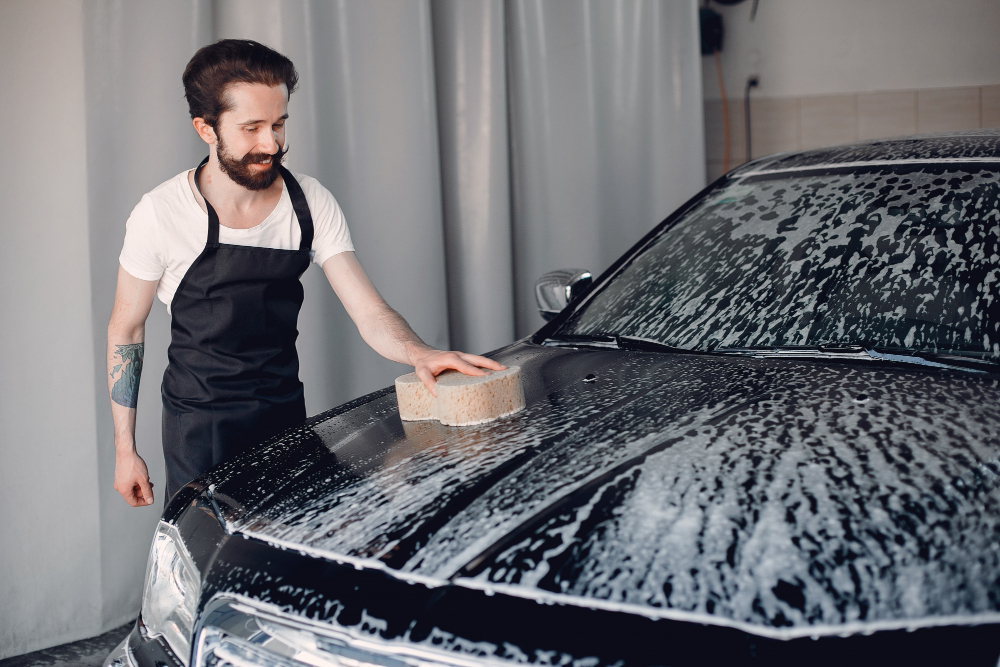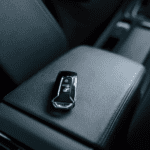
Filth, dust, and grime accumulate on your vehicle over time, affecting not only its aesthetic appeal but also its performance. This dirt can lead to corrosion, decay, and other damages if not addressed in a timely manner. Furthermore, the interior of the car can also become a breeding ground for bacteria and allergens, which can affect the health of the passengers.
Car detailing is the solution to this problem. It’s an involved process that includes washing, waxing, polishing, and conditioning both the interior and exterior of the car.
Regular car detailing can help keep your vehicle in top-notch condition, extending its lifespan and maintaining its value. By hiring professional car detailers, you can ensure that your car is treated with high-quality products and techniques that not only clean but also protect your vehicle.
Car detailing, an extensive cleaning and reconditioning process, is a meticulous operation that aims to restore your vehicle’s beauty while also providing essential protection against potential damage. This comprehensive guide will dive into the fundamentals of car detailing, covering areas such as exterior wash, interior cleaning, and other related factors.
Exterior wash
The first step in car detailing, involves removing surface dirt and grime. This step uses a quality car cleaning product to ensure a thorough, gentle cleaning, protecting your vehicle’s paint from scratches.
Interior cleaning
Another essential aspect of car detailing, includes vacuuming, steam cleaning, and upholstery cleaning. Vacuuming removes loose particles from the floor mats, seats, and other surfaces. Steam cleaning, a deep-cleaning method, eliminates stubborn stains, while upholstery cleaning helps maintain the appearance and durability of the vehicle’s seat covers.
Waxing
A part of the exterior detailing process, adds a protective layer over the vehicle’s paint, shielding it from environmental damage. Similarly, polishing aids in removing minor scratches and restoring the shine of the vehicle.
Detailing service
A professional car cleaning process, involves meticulous steps for a thorough cleaning. This service includes specific procedures such as leather treatment for the seats, trunk cleaning, and engine bay cleaning to ensure every area of your car is spotless and well-maintained.
Upholstery cleaning
Is a crucial step in interior detailing, focusing on the removal of stains and dirt from the vehicle’s fabric. This step often involves fabric protection applications to prevent future stains.
Steam cleaning
A type of deep-cleaning, sanitizes the surfaces within your car using high-temperature steam. This method kills bacteria and viruses, making it an effective option for area sanitization.
Professional detailing services
Also offer paint protection, a process that applies a protective sealant to your vehicle’s surface, offering a barrier against harmful elements. This service often includes ceramic coatings, a layer of protection that provides long-lasting shine and preservation.
Tire cleaning
Enhances your vehicle’s overall appearance. This process removes dirt and grime, restoring the tire’s shine. Similarly, headlight polish restores the clarity of your headlights, improving visibility and safety.
In addition to these, professional detailing services offer leather treatment to nourish and protect your vehicle’s leather surfaces. This process prevents cracking and fading, ensuring your car’s interior remains luxurious and comfortable.
Engine bay cleaning
A less-known but essential detailing service, removes dirt, grease, and grime from your car’s engine. This service maintains your vehicle’s performance and can prevent potential mechanical problems.
Trunk cleaning
Often overlooked in regular car cleaning, is another key aspect of detailing. A clean trunk prevents odors and helps maintain your car’s overall cleanliness.
Odor removal
Is a critical part of interior detailing, ensuring a pleasant drive. This process involves eliminating unpleasant smells, often through a deep-cleaning or sanitizing process.
Fabric protection
An option in professional detailing services, protects your car’s upholstery from spills and stains. This treatment forms a barrier on the fabric, preventing liquids from soaking in.
Car maintenance
A broader concept, involves regular checks and services to ensure your vehicle’s performance and longevity. This includes regular exterior washes, interior cleaning, and detailing services.
Protective sealant
A product used in exterior detailing, provides an additional layer of protection to your vehicle’s paint. This service helps prevent damage from UV rays, acid rain, and bird droppings.
Scratches removal
A part of the polishing process, improves your car’s appearance. Depending on the severity, scratch removal might require more intensive processes, such as paint correction.
Rust protection
A preventative measure in car maintenance, involves applying a protective coating to prevent rust development, particularly important for those living in humid or coastal areas.
Carpet cleaning and seat shampooing
Parts of interior detailing, help maintain a clean, fresh-smelling vehicle interior. These processes remove dirt and stains from the car’s carpets and seats.
Lastly
Glass cleaning
Ensures clear visibility while driving. This detailing service removes dirt, smudges, and streaks from all the glass surfaces in your vehicle, including the windshield, rearview and side mirrors, and windows.
Frequently asked questions
1. What specific products are typically used in the exterior wash process to protect the vehicle’s paint from scratches?
In the exterior wash process, a few key products are typically used to protect the vehicle’s paint from scratches. The first is a high-quality car shampoo, which is designed to gently lift dirt and grime without scratching the surface. Microfiber wash mitts and soft brushes are also used for the same reason. After the wash, a clay bar is often used to remove embedded contaminants that regular washing can’t remove. Finally, a carnauba-based car wax or a synthetic paint sealant is applied to provide a protective layer against scratches and UV damage.
2. Can you elaborate on the types of stains and dirt that the upholstery cleaning process targets in the interior detailing?
The upholstery cleaning process in interior detailing targets various types of stains and dirt. These can include common stains like those from food, drinks (coffee, soda, juice), oil from skin, makeup, ink, pet stains, and child-related stains such as milk or vomit. It also targets dirt and dust that accumulate over time, especially in hard-to-reach areas. Specialized cleaners and techniques are used depending on the type of upholstery (fabric, leather, vinyl) and the type of stain.
3. How does the protective sealant used in paint protection differ from the ceramic coatings, and what specific harmful elements do they protect against?
Protective sealants used in paint protection usually offer a hard-shell protection to the car’s surface. They are usually made from polymers that bond directly with the paint, providing protection against minor scratches, UV rays, and water spots. On the other hand, ceramic coatings offer a higher level of protection. They are made from ceramic particles that create a more substantial, semi-permanent layer over the paint. They protect against scratches, UV rays, chemical stains, and heat damage. Ceramic coatings also have hydrophobic properties, meaning they repel water more effectively.
4. Could you explain in more detail the process of the odor removal in interior detailing, and what type of smells it typically targets?
Odor removal in interior detailing involves a few steps. First, all surfaces are thoroughly cleaned to remove any substance that could be causing the smell. This includes upholstery cleaning, carpet shampooing, and cleaning of hard surfaces. If the smell persists, an ozone generator might be used. This machine releases ozone, a gas that can neutralize various types of smells, including smoke, pet odors, and mold. Finally, air fresheners or deodorizers may be used to provide a pleasant scent.
5. What are the specific steps taken in the rust protection process and how does it help for those living in humid or coastal areas?
Rust protection process involves several steps. The first is to thoroughly clean the undercarriage of the vehicle to remove any dirt or grime. Then, a rust inhibitor is applied to the clean metal surfaces. This creates a barrier against moisture and slows down the oxidation process. For those living in humid or coastal areas, this process can be especially beneficial as the high salt content in the air can accelerate rusting. Some may also choose to apply an undercoating for additional protection against rust, as it provides a physical barrier against water, salt, and other harmful substances.
In conclusion, basic car detailing involves a series of steps and processes designed to clean, restore, and protect every aspect of your vehicle. Starting with a thorough exterior wash and interior cleaning, to more specific services like waxing and polishing, professional detailing ensures your car maintains a pristine, well-maintained appearance.



